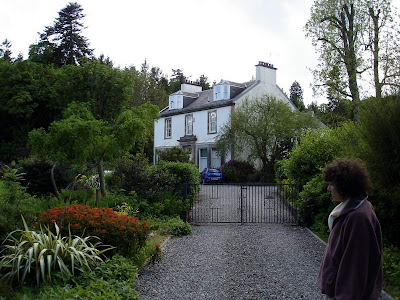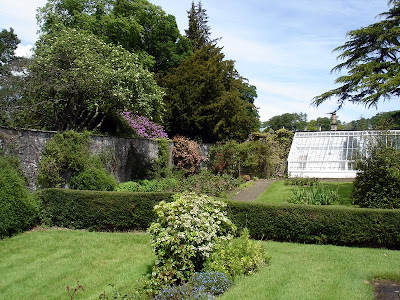
If you click on the photo of the handwriting you should be able to enlarge the picture.You may be able to zoom in to see the words better although if you zoom too far they will become hazy. This is an experiment, so fingers crossed!
The problem with inserting the transcription into this blog entry is that the text alignment keeping getting messed up. Despite many hours of trying to fix this the post may not keep the alignment. I apologise in advance if this happens.
Crosswriting Horizontal
Cape Town, Cape of Good Hope Janr.12 1830
My dearest Mother
We arrived here this morning after a most favourable
voyage from Port Praga both as to wind and weather and I have
not suffered nearly so much as before 1xxxxxxx at that Port.
Molloy also has been wonderfully well throughout.The animals
have stood it better and this past week we have had three
lambs two of which I hope will survive, one died yesterday.
We have not 2xxxxx and since I wrote before. Cape Town is
prettily situated with immense Rocks behind it & a
singular shaped mountain called Table Mount.
It is now their summer and I have just been feasting
on Grapes a large 3xxxxx for a shilling and some Pears which
are tasteless not so highly flavoured as British fruit and a
beautiful Craw fish for four pence which Staples seized upon
and had instantly boiled for me. Molloy has now gone in search of
a domicile for himself and me as the expense of taking
our servants on shore would be heavy. Some mountains to
the left right reminds me of those at the head
of Gair Loch but these you do not know. We thought much of
you all on 4xxxxxxx New Years Day last and consoled ourselves
with thinking you would all think much of us and drink our
health, it was very unlike Xmas from its being oppressively hot.
I think you will just be seeing our Letters from Porto Praga at this (time)
Crosswriting Vertical
Proteas such as they have at Holbrook are used for fuel and whole 5xxxxx of them. Lady Lowry
kindly stopped and brought all the beautiful plants to me. They think nothing of driving
10 & 14 horses at a time in their wagons which resemble the covered 6xxxxxxxx of
England. And innumerable fruit of the most luxurious kind perfectly
7xxxxxx. Grapes, Mulberries, Peaches Figs, Loquats a Chinese fruit covered the
Breakfast Table and everything is so beautifully clean. I am infinitely better than
I am on Board, as then every day I am sick but doubtless there are reasons for it and
all may be comfortably arranged by May. Mrs. Dawson is to be confined in
March and I have been so ill & felt the idea so repugnant,
of working before any one. I have not put in a single 8 xxxxxx for myself altho’ some
Ladies on board have offered their patterns. If you send the things I
ordered I shall be thankful to receive them but if you have not sent them I shall
not regret it as Molloy will not be out of pocket, he does not know I have ordered
them. The accounts of Swan River are varied according to the idea of the
persons who give them some reports favourable others not, we think passage will (be)



















































